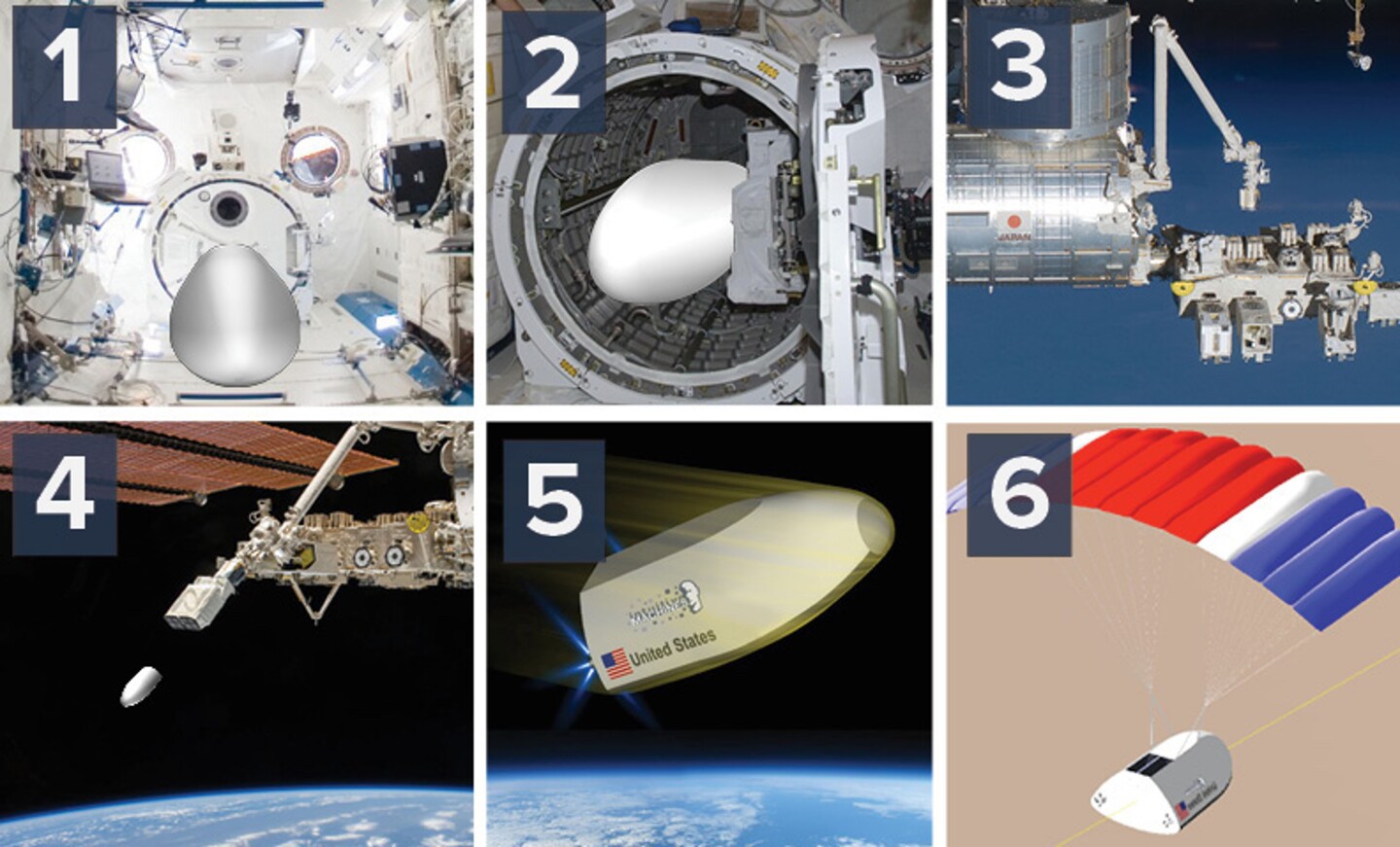So much attention is paid to how to get into space that we often forget that getting back can be just as difficult. For example, getting experiment samples back from the International Space Station (ISS) is a logistical nightmare. Intuitive Machines' Terrestrial Return Vehicle (TRV) system may change that by making sending small payloads back to Earth as easy as mailing a parcel.
Getting samples back from the ISS currently means hitching a ride on a returning cargo or crew ferry craft, but this happens only a few times a year with every ounce already spoken for. That may be okay for most items, but what about the ones that can't wait?
The Terrestrial Return Vehicle (TRV) is a commercial service being developed by Intuitive Machines and NASA as part of a project under the Center for the Advancement of Science in Space (CASIS), which is responsible for installing the TRV on the space station and non-flight systems. It's designed to return small samples on demand from the ISS on the same day, and is suitable for critical and perishable materials that can't wait for the next ship home.

The TRV system is designed to be stored in the habitable volume of the ISS until required. When loaded up with its cargo, the TRV is placed in the Japanese Experiment Module (JEM) airlock, where the Cyclops ejection mechanism and the JEM Robotic Manipulator System are used to deploy it. Once released from the ISS, the TRV's guidance and propulsion systems take over and execute a controlled reentry maneuver before the craft's airfoil is deployed and it touches down at its designated spaceport.
According to Intuitive Machines, the lift-to-drag ratio of the TRV allows it to act as a lifting body, so it suffers from lower g-forces than a capsule and has enough control to land at a desired location for recovery and shipping to the customer.
"The International Space Station, with its unique microgravity laboratories and crew, enables research over a wide range of disciplines from physics through biology," says Dr. David Wolf, a research scientist and former astronaut. "This small payload return capability will provide controlled conditions and flexible choices for timely sample analysis. The scientific team will be able to much more efficiently adjust experimental parameters in response to results, exploit unique results, and correct problems encountered.”
The TRV system is scheduled to fly in 2016.
Source: Intuitive Machines






